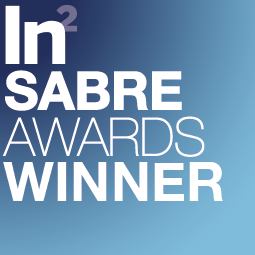DC:
10 G Street, NE
Suite 710
Washington, DC 20002
Introduction to Digital Branding: What It Is and Why It Matters
Digital branding is all about how you show your brand online. It’s the look, the message, and the feel people get when they interact with your brand on the internet. Think of it like your digital handshake—first impressions matter. Why does it matter, you ask? Simple. In today’s world, almost everyone starts their search for anything online. If your digital presence doesn’t wow or at least catch the eye, you’re losing out on potential customers, followers, or fans right from the start. Plus, effective digital branding sets you apart from the sea of competition. It tells your story in a way that resonates with people, making them not just viewers but loyal supporters of your brand. So, getting your digital branding right isn’t just nice to have; it’s crucial if you want to thrive in the digital marketplace.
Setting Your Digital Branding Objectives
Before you dive into the digital branding pool, you gotta know why you’re jumping in the first place. Set clear, measurable goals. Ask yourself, what do you want to achieve? More sales, a bigger audience, or maybe you’re aiming to be the top dog in customer service in your industry. These goals will guide your strategy, telling you where to focus your energy. Remember, if you aim at nothing, you’ll hit it every time. Make these objectives smart – Specific, Measurable, Achievable, Relevant, and Time-bound. This isn’t just fluffy advice; it’s your roadmap. Without clear objectives, you’re just throwing stuff at the wall to see what sticks. And in the digital world, that’s a fast track to wasted time and cash. Keep these objectives front and center as you plan your digital branding strategy. They’re the beacon that keeps you on course.
Identifying Your Target Audience for Effective Digital Branding
Understanding who your audience is, is crucial for digital branding. You need to know who you’re talking to if you want your message heard. Start by laying out who your ideal customer is. Consider age, location, interests, and what problems they need solved. This guides what content you create, where you share it, and the tone of voice you use. For instance, younger audiences might prefer engaging, fast-paced content on platforms like Instagram or TikTok, while a professional audience could be more receptive to detailed articles or LinkedIn posts. By pinpointing your target audience, you shape your digital branding efforts to be more effective, ensuring that your message not only reaches the right ears but resonates with them.
Crafting a Memorable Brand Identity Online
Creating a memorable brand identity online isn’t just about picking pretty colors or a cool logo. It’s about standing out and making sure people remember you for the right reasons. First off, know what makes you unique. Ask yourself, what can you offer that no one else can? That’s your starting point. Next, consistency is key. Your colors, logo, and messaging should be the same everywhere online – from your website to your social media. This makes you recognizable. Also, engage with your audience. Talk to them, listen to their feedback, and show that you value them. This builds a community around your brand. And don’t forget to keep an eye on what’s trending. Being adaptable and relevant keeps you in the game. But remember, while it’s good to be current, stay true to your brand’s core values. These steps will set you on the path to crafting a brand identity online that’s not just seen but remembered.
Utilizing Social Media for Digital Branding Success
Social media is the backbone of any digital branding strategy. It’s where people hang out, share ideas, and discover new favorites. To nail your digital branding on social media, first, identify the platforms your target audience loves. Are they scrolling through Instagram, tweeting away on Twitter, or diving deep into discussions on LinkedIn? Once you know where they are, engage with them. Post content that resonates with your audience, not just ads. Share stories, insights, and even behind-the-scenes glimpses of your brand. Interaction is key—reply to comments, participate in conversations, and even host live sessions to bring your brand to life. Remember, consistency is your friend here. Keep your brand voice and visual aesthetics uniform across platforms. This builds recognition and trust. Also, don’t overlook the power of influencer collaborations. A shoutout from the right person can skyrocket your brand’s visibility overnight. In short, be where your audience is, speak their language, and be genuine. That’s how you win at social media branding.
SEO Strategies to Boost Your Digital Brand Presence
SEO, or Search Engine Optimization, is key to making your digital brand visible and getting it to the top of search results. Here’s how to do it right. First, focus on keywords. Know what words people use to search for services or products like yours. Use these words on your website and in your content. But don’t overdo it. Stuffing your content with too many keywords can backfire. Second, create quality content. Content that answers questions, solves problems, or entertains your audience will more likely rank higher in search results. This includes blog posts, videos, and social media updates. Third, optimize your website. Make sure your website loads quickly, is easy to navigate, and is mobile-friendly. A slow or hard-to-use website can hurt your SEO ranking. Lastly, build backlinks. When other reputable sites link back to your website, it signals to search engines that your content is valuable, boosting your site’s credibility and position in search results. SEO is a marathon, not a sprint. Start with these strategies, and keep adjusting as you learn what works for your brand.
Content Marketing: A Key Component of Digital Branding
Content marketing is a big deal when we talk about digital branding. It involves creating and sharing online material – think blogs, videos, and social media posts – that doesn’t outright sell your brand but stirs interest in your products or services. It’s about giving your audience something valuable without asking for anything in return. Here’s why it’s crucial: nowadays, people crave authenticity. They don’t just want to see an ad and buy stuff. They want to learn, be entertained, and connect with the brands they choose. Content marketing lets you do that. It helps you appear more human and less like a faceless business. Plus, it’s good for your online visibility. Ever heard of SEO? Well, content marketing boosts your SEO efforts, helping your brand show up in search results when potential customers look for a service or product you provide. So, think of content marketing as your digital handshake. It introduces you to your audience, builds trust, and creates a path for them to follow back to your brand.
Leveraging Influencers to Enhance Your Digital Brand
In the digital age, influencers have become a key tool for branding. Think of them as turbo-charged word-of-mouth marketing. When you collaborate with influencers, you’re tapping into their audience – an audience that trusts them. It’s like having a friend recommend your product, but this friend has thousands or even millions of followers.
To make the most out of influencers, it’s not just about picking anyone with a large following. You want to ensure their audience aligns with your target market. It’s pointless to partner with a fitness influencer if you’re selling art supplies. Once you’ve found the right influencer, work on creating authentic content. Audiences can sniff out a forced advertisement from miles away. The goal is to have the influencer introduce your brand in a way that feels natural.
Remember, successful influencer partnerships are about building relationships. Treat influencers as part of your team, not just another advertising channel. This approach not only helps in creating more genuine content but can also foster long-term collaborations that keep your brand in the loop with potential customers. It’s a win-win.
Monitoring and Adjusting Your Digital Branding Strategy
Once you launch your digital branding strategy, it’s crucial to keep an eye on how it performs. You can’t just set it and forget it. To stay ahead, constantly monitor key performance indicators (KPIs) such as website traffic, engagement rates, and conversion rates. These metrics tell you if your strategy is hitting the mark or if it’s time to tweak some parts.
If you notice a dip in engagement or your goals seem further away, don’t sweat it. It’s all part of the game. Adjust your strategy based on the data you gather. Maybe your audience responds better to video content rather than lengthy blog posts, or perhaps a different social media platform aligns more closely with where your audience hangs out. Testing and tweaking are how you refine your strategy to ensure it resonates with your target audience.
Remember, staying flexible and open to change is key. Digital trends evolve, and so should your approach. By keeping a close watch and being willing to adjust your sails as needed, you’ll keep your digital branding strategy sharp and successful.
Conclusion: Key Takeaways from Expert Digital Branding Tips
Crafting a digital branding strategy is critical for standing out online. From what we’ve gathered, remember these few, but powerful steps: First, know your audience like the back of your hand. Their needs, preferences, and behaviors are your roadmap. Second, consistency is king. Whether it’s your visual identity, message, or online interactions, keep them consistent across all platforms. This builds trust and recognition. Third, tell a story. People connect with stories, not sales pitches. Make your brand’s story engaging and authentic. Lastly, always analyze and adapt. The online world changes fast. Keep tabs on your strategy’s performance and be ready to tweak it as you go along. In this rapidly evolving digital landscape, staying flexible and informed is your best bet for success.




















